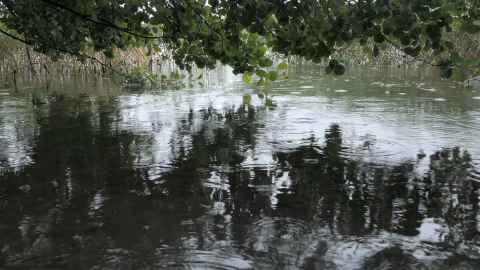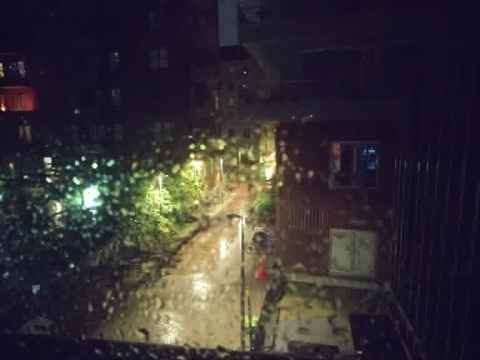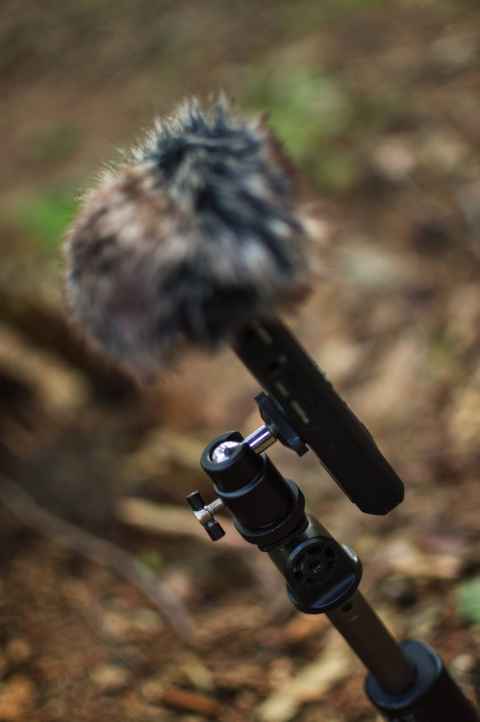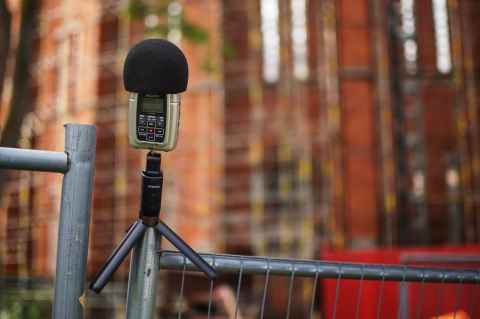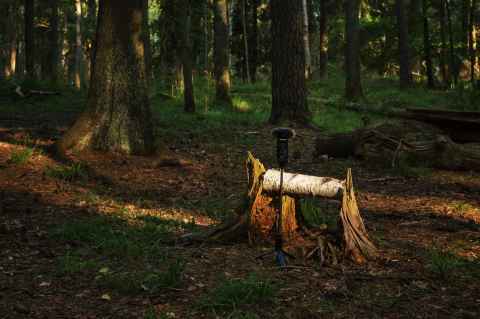I was selling my old GPU on Blocket when I saw an ad for a Zoom H2[a] for 300 SEK ($30). Ever since I filmed Yamato - The Drummers of Japan and was surprised at how much better the final product was thanks to the Nikon ME-1[b] microphone that I used, I've wanted to improve the sound in my videos.
Sound, like photography, however, is an area where there is no upper limit to how much you can spend; and it gets expensive fast. (A Zoom H2essential[c], for example, will set you back about $200, and that is considered a very unremarkable sound recorder.) But for $30 I'll take the plunge and see what I can get out of it. The ability of the H2 to record directionally in 90- and 120-degree arcs seemed useful; and a four-channel 360-degree mode seemed like a lot of fun.
So I pressed the buy button, received the recorder, put some batteries in it, pressed record and let it run for a bit, then plugged it into my computer.
1. Levels
It sounded like crap. I could barely hear anything, and amplifying it in Audacity[d] just gave me a sea of noise. I must be missing something, it can't be this bad, it just can't.
And that's how I learned about recording levels and microphone gain.
My next attempt was recording water. This time, though, I came back with something that was close to what I had intended to record. Thanks to getting the levels right and putting the microphone really close to the source of the sound, I ended up with what in photography would be a correct exposure.
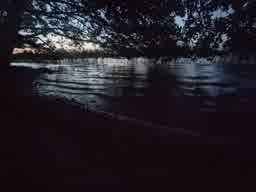

2. High Pass
Excited and happy with the progress, I went out again. Now for some bird song. Again, I came back, brought it up in Audacity, and I must be missing something, it can't be this bad, it just can't. The Zoom H2 is known among field recordists as a pretty bad recorder, with unacceptable levels of self-noise[1] but even so it can't be this bad.
And that's how I learned that our brains filter out background noise really well. My much-maligned H2 was innocent: the noise was the E18 freeway, about a third of a mile away. I had to get rid of it.
Bringing up the recording in Audacity, I tried the noise removal effect. Not good. I read around on the web, and on Acoustic Nature's review of the Zoom H1n[f], I noticed that all samples on the page had a note that they had come through a low-cut filter of 80-160 Hz. So I dove back into Audacity and got really aggressive with the EQ curves, pushing anything below the 80-100 Hz region down by 48 dB and into silence. The spectrogram looked absolutely mangled, but I could for the first time actually see the bird chirps - and they were untouched by my mutilation of the recording. It turned out really well.

This technique worked except for the wind in the trees, which were distorted to metallic squeaks. In later recordings I started mixing back some unfiltered sound - when the wind was blowing I'd have the original recording and only do a hard high-pass filter when there was no wind noise.
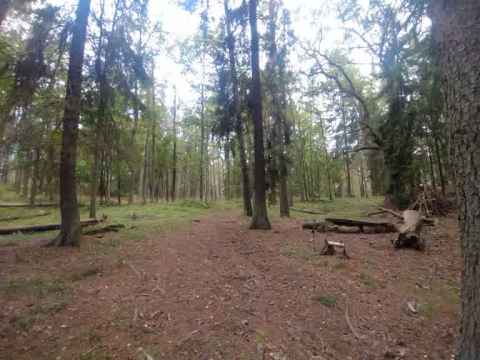
Then we had some rainy days, and that of course led to a lot of learning opportunities.
3. Izotope RX
I downloaded a trial install of Izotope RX 11[g], thinking that it would be like Topaz Denoise AI[h] for sound. Was I ever wrong. Yes you can go hog wild and edit the sound, but it requires much more expert guidance than the just-press-the-button that Topaz Denoise AI gives you. If I'm going to do most of the work anyway I'd rather do it in Audacity for free.
4. Olympus LS-P5
By now I had reached the point where I thought I had at least a rudimentary grasp on recording technique (how to get the raw source material), hardware capabilities (what the recorder can do), and software capabilities (what I can do in post-production). My time in photography taught me a lot about the need to pre-visualize the end product before recording anything, as that is the only way to guide your decisions.[2] This turned out to be true for field recording, too.
With that, I was ready to step up and do this a bit more seriously. I wanted something smaller and better than the H2. There were many options:
Zoom H2e[i] - while it brought 32-bit recording - which would help with recording levels - it wasn't a step up quality-wise, nor was it more portable than the one I already had.
Zoom H5[j] - the nearest step up with built-in microphones. Too big, though.
Zoom H1e[k] and Clippy[l] external microphones - the H1e is a small recorder, but requires hauling external microphones around.
Zoom F3[m] and Pluggy[n] external microphones - very high quality, but again a lot to lug around.
TASCAM Portacapture X6[o] - big and expensive, but high quality.
Sony A10[p] - small size and high quality, but only available second hand with all the doubts about life expectancy that comes with that. Not to mention the price, the A10 being a sought-after recorder among more serious field recordists.
OM System LS-P5[q] - smaller and higher quality than the Zoom H2, available first-hand at a reasonable price.
Ultimately it was the size of the recorder that was decisive. I needed something that would fit among all my other gear, and I expected to still carry around a camera and lenses. The Zoom H2-series still had the unique ability to do four-channel 360-degree recordings, but it was a lot to lug around. I saw a good deal on the LS-P5 videographer kit[r] and took the plunge.
5. Now
Which brings me to today. The LS-P5 produces results that are as good as or better than the H2, with the advantage that it is a quarter the size of the latter. It goes into my camera bag and when I'm out with it I use an old selfie stick that I've added a simple ball joint to[s] so I can comfortably point and hold the recorder near what I'm recording.
